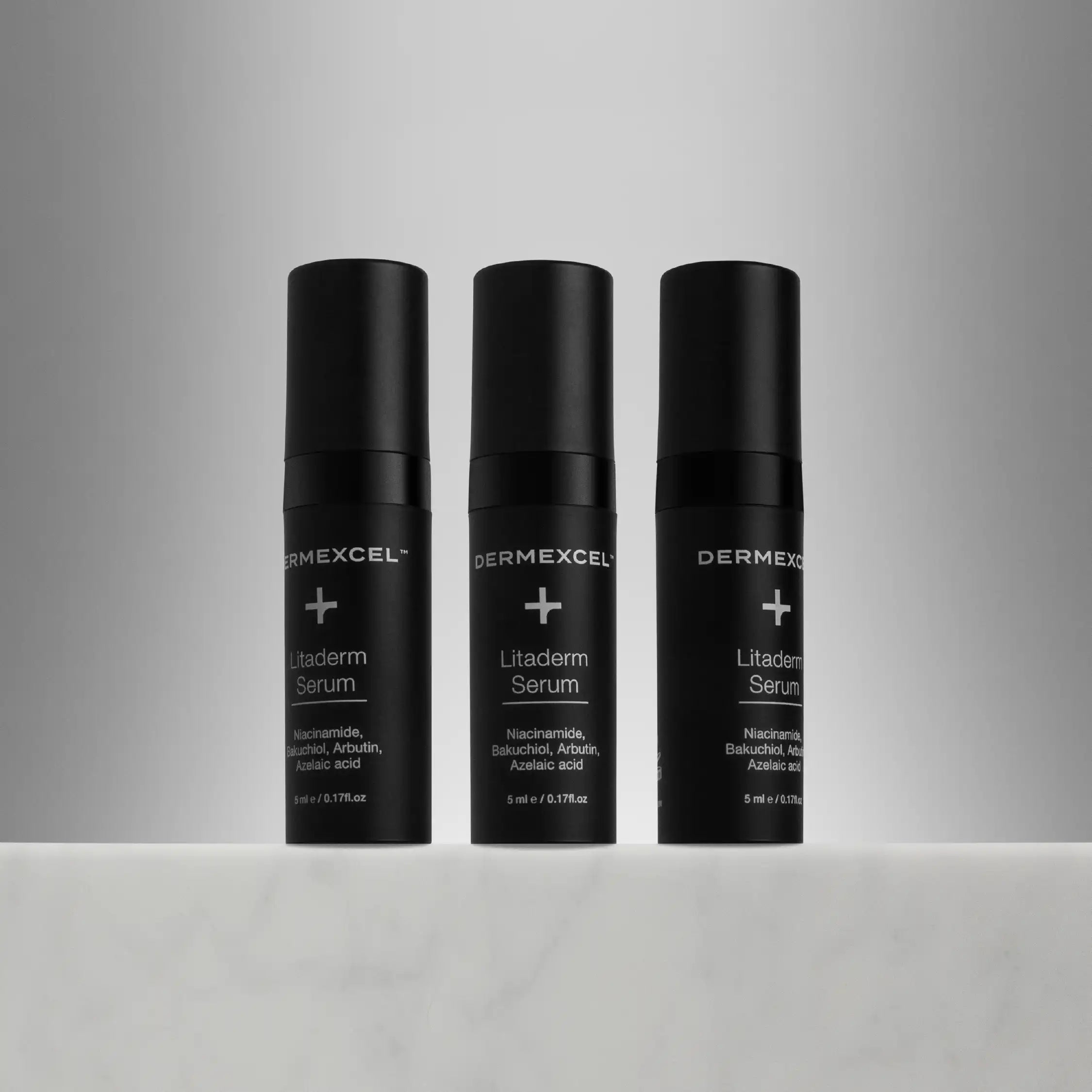






Pay interest-free installments from R 50.00 with various payment gateways selected at checkout.
SIZE: 5 mL




Choose options



Aqua, Macrogol, Azelaic acid, Nicotinamide, Glycerine, Arbutin, Jojoba Oil, Bakuchiol, Isostearyl Alcohol · Butylene Glycol Cocoate Ethylcellulose, Butylene glycol, Ceteth-20 · Cetyl Alcohol, Glyceryl Stearate, Steareth-20, C12-15 Alkane, Phenylpropanol, Propanediol, Caprylyl Glycol, Tocopherol
before melanin production
during melanin production
after melanin production
arbutin
bakuchiol
niacinamide
azelaic acid
before melanin production
arbutin
bakuchiol
niacinamide
azelaic acid
during melanin production
arbutin
bakuchiol
niacinamide
azelaic acid
after melanin production
arbutin
bakuchiol
niacinamide
azelaic acid
Litaderm Serum: Trial
product benefits
Skin barrier enhancement
Boost Collagen Production
Anti-Aging
Anti-inflammatory
Moisturizing
Anti-Microbial
Rosacea Relief
Pigmentation treatment
Indications for Litaderm Serum: Trial
Pigmentation
Dry Skin
Dull & Lifeless Skin
Rosacea / Red Skin
Acne / Breakouts
Enlarged Pores
Rough Skin Texture
Litaderm serum
mode of action

litaderm action on
all pigmentation phases
before melanin production
during melanin production
after melanin production
arbutin
bakuchiol
niacinamide
azelaic acid
before melanin production
arbutin
bakuchiol
niacinamide
azelaic acid
during melanin production
arbutin
bakuchiol
niacinamide
azelaic acid
after melanin production
arbutin
bakuchiol
niacinamide
azelaic acid
pigmentation
treatment steps

Bakuchiol

Azelaic acid and Arbutin

Niacinamide

Azelaic acid
Rosacea
Stages and treatment objectives




Testimonials


Not sure which products you need?
Find your regimen
Assessment
Submit your free Dermal Diagnosis™ Assessment
Treatment Plan
Receive your Free Personal Profile and Treatment Plan
Confident Skin
Start your Simple and Effective journey to Confident Skin!



















